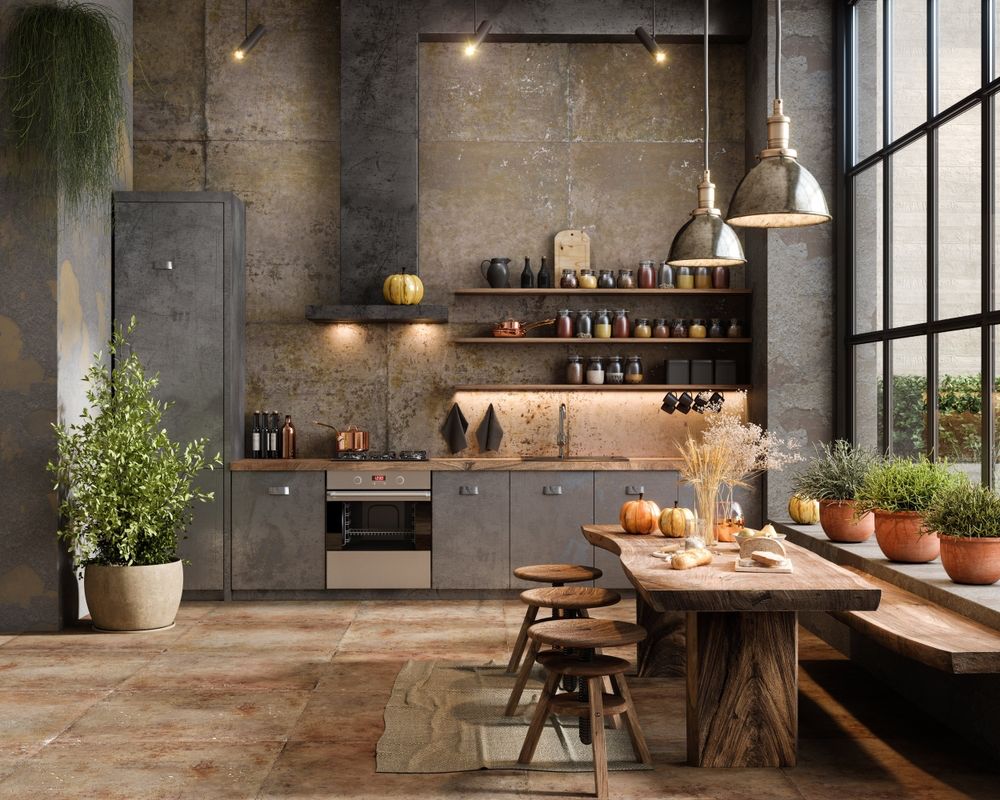Cultural Changes to Improve Your Kitchen and Inspire You
The kitchen is a very high-traffic area that is considered the beating heart of the home. It is a place where you can get lost in creative cooking, nourishing your body and connecting to those you love through food. With this being said, it’s very easy to let yourself fall into the same typical patterns in the kitchen, losing that inspiration for creativity and exploring new foods from different cultures. Instead, you can choose quick and convenient solutions to cook, such as frozen food that goes in the oven. Now, this isn’t bad for those long and busy days, but it’s something that’s become relied on by many people. This can be due to many factors, such as losing the spark for cooking or not having an inspiring kitchen.
If you’re feeling uninspired by your kitchen, it may be time to renovate it in a unique way. Inspiration for cooking comes from exploring new foods and cultures, so you should look beyond the popular aesthetics and think about a meaningful transformation that highlights various cultures. Designing your kitchen using cultural inspiration can breathe new life into it and inspire you to get creative with your cooking every time you step foot inside!
Embracing the Korean Concept of Jeong

Korean culture includes the concept of Jeong. This is basically an emotional bond that reflects kindness, warmth, and empathy in any relationship. The concept can be applied to the kitchen to inspire you and help you connect closely to the people you love. Jeong in the kitchen should focus on how food is shared and should encourage you to make every meal with care, attention, and love.
So, how do you transform this concept into your kitchen design? Well, since Jeong is all about bringing people together and being kind to one another, you need to focus on making your kitchen a communal space. What bonds your family together more than cooking together or having an open conversation over meal prep? Rather than isolating the person who’s cooking, your kitchen should encourage participation and conversation as a gathering space.
Think about an open kitchen layout with plenty of seating or a central island for people to gather at. You could showcase your cookware with pride rather than keep it hidden away in cabinets to add warmth and coziness to it. As for materials, choose warm tones, such as wood, and have equipment that makes it easy to share with others. This could be shared serving platters and family-style meal recipes. Doing this creates a more emotional kitchen that is meaningful to everybody.
The Japanese Influence of Wabi-Sabi
You could strip your kitchen back to a peaceful and minimalist design with no worries about hiding imperfections. This approach draws on the Japanese influence of Wabi-Sabi, which refreshes your kitchen and transforms how it works. It focuses on the beauty of imperfection and celebrates authenticity and a calm atmosphere.
This design doesn’t really need a renovation, but a new perspective. Using natural materials, such as wood, stone and linen, instantly gives your kitchen a homely, inviting and lived-in look. This is especially the case when the materials start to show signs of wear, highlighting that the kitchen is used regularly and allows you to be proud of its imperfections. You should incorporate handcrafted ceramics, uneven tiles, and restored furniture to bring character to the space. Doing this makes your kitchen a reflection of its use and history, showing off every imperfection rather than being a cold, perfect space.
Italian Passion for Food
For Italian households, the kitchen is more than just a place to cook; it’s the hub of bringing family together, celebrating, and enjoying delicious dishes. Italians turn cooking and eating into an event, and don’t think of it as a chore. They take time with preparing and cooking rather than rushing through it. It’s about making meals delicious, beautiful, fun, and sociable. Time is taken to prepare ingredients, and everyone can participate in the process. Italian kitchens are more vibrant, with echoes of chatter and laughter while serving generous portions.
If you want to make your kitchen into a place of dedication, love, family and friends and want to bring the space to life, then it’s ideal to draw on the Italian influence. Think about how easy your kitchen is to socialize in and if there’s plenty of space for everyone to gather. You may need to rethink seating arrangements and potentially add a small table, if possible, for morning get-togethers over coffee and breakfast. You should be proud of your kitchen and what you make in it, so keep ingredients visible and accessible. The kitchen should make you feel like you never want to leave it, inspiring you to push the boat out with your cooking skills and mix it up more. It should draw you in to spontaneously cook and enjoy food at any given moment. Think aromatic herbs in pots, open shelves displaying seasonings, oils and other cabinet ingredients, and vibrant music playing softly in the background.
Nordic Simplicity and Practical Design
Scandinavian countries have mastered the art of blending minimalism with coziness, a concept known as Hygge. Their kitchens reflect clean lines, bright spaces, and practical use of every corner. They focus on warmth and homeliness, while keeping things to a minimum to ensure the environment doesn’t become sterile. The key is simplicity that serves a purpose, creating a calm space that promotes mindful living.
To incorporate this stunning minimalism into your kitchen, opt for natural light, functional storage, and muted color palettes. Make sure that every available space is decluttered to give an organized kitchen, allowing you to jump straight into cooking with nothing in the way. However, try not to organize so much that it becomes sparse and cold; you still want warmth and an inviting atmosphere. To do this, use wooden textures, soft textiles, and thoughtful organization to make a small kitchen feel spacious and welcoming. The Nordic approach also places high value on sustainability, encouraging the use of durable materials and energy-efficient tools.
Craftsmanship as a Common Thread
One of the most overlooked yet powerful ways to improve your kitchen is to pay attention to the craftsmanship of the materials and tools you bring into it. Across many cultures—from Japanese bladesmiths to German engineers—quality craftsmanship is not just respected but valued. Investing in fewer, higher-quality kitchen tools and furniture pieces can completely turn around the entire experience of cooking.
This appreciation goes beyond the kitchen as well. For those exploring handmade upgrades, crafting elements like custom cutting boards, floating shelves, or wooden seating can reconnect you with your imagination and creativity. When designing these, the right tools matter, such as the correct saw blades to give clean-cut edges. These often go unnoticed in the final result, playing a quiet but essential role in shaping the warmth and precision of your kitchen.
Cultural changes to your kitchen don’t need to be expensive. They begin with a shift in mindset, from seeing the kitchen as a utility space to embracing it as a place of tradition, emotion, and expression. Whether you’re channeling the comforting spirit of Korean Jeong, the serene imperfection of Wabi-Sabi, or the inviting energy of Italian hospitality, your kitchen can be more than just functional.






